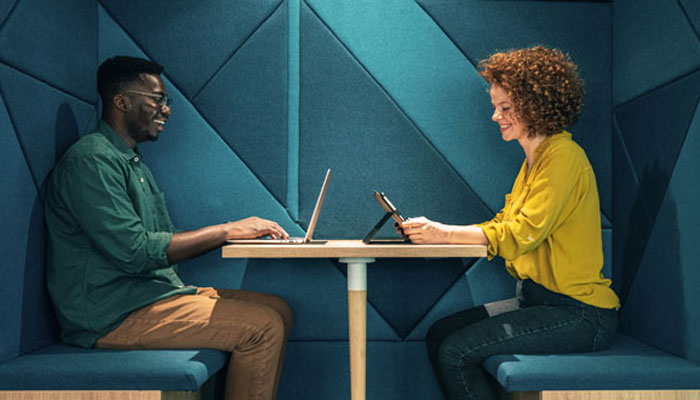06.12.2023
Navigating Inclusion: Useful tips on how businesses can create neurodivergent-friendly offices

With approximately 1 in 7 individuals in the UK being neurodivergent, according to the Local Government Association, designing an office space for inclusion and neurodiversity is crucial. Tailoring the environment to accommodate diverse cognitive perspectives promotes employee wellbeing and taps into the unique strengths of a neurodiverse workforce, fostering a culture of creativity, productivity, and belonging.
Interior office design experts at Studio Alliance have provided six invaluable tips that can help businesses create inclusive and neurodivergent-friendly spaces for workers to feel productive and comfortable in.
- Flexible Workstations: Flexibility in workstation design allows individuals to choose an environment that suits their needs. Neurodiverse individuals may have different sensory preferences, and providing options for standing desks, quiet corners, or collaborative spaces caters to various work styles. This supports the diverse needs of employees, enhancing their comfort and productivity.
- Sensory Considerations: Sensory-friendly design is crucial for neurodiverse individuals who may be sensitive to light, sound, or other stimuli. Use adjustable lighting, noise-cancelling features, and acoustically designed spaces to create an environment that minimises distractions. This promotes a more comfortable and focused work atmosphere for everyone.
- Quiet Spaces and Retreats: Having designated quiet spaces allows individuals to take a break and recharge. This is particularly beneficial for neurodiverse employees needing a reprieve from overstimulating environments. Quiet retreats provide a space for relaxation, concentration, and stress reduction, contributing to overall wellbeing.
- Clear Navigation and Signage: Clear signage and well-defined pathways assist individuals in navigating the office space quickly. Neurodiverse individuals, who may experience challenges with spatial orientation or changes in routine, benefit from a well-organised layout. Consistent and intuitive signage helps reduce anxiety and enhances accessibility.
- Diverse Meeting Spaces: Create various meeting spaces to accommodate different communication styles and preferences. Some neurodiverse individuals may feel more comfortable in one-on-one meetings or small groups, while others may thrive in larger, more collaborative settings. Offering a range of meeting spaces supports diverse communication needs and fosters inclusivity.
- Employee Input and Feedback: Involve employees, including neurodiverse individuals, in the design process. Gather feedback on the current workspace and ask for suggestions for improvement. This participatory approach ensures that the design is genuinely inclusive and meets the workforce's specific needs. It also fosters a sense of belonging and empowers employees to contribute to a more supportive work environment.
Add your comment

Department/function
Region
Employment Type


